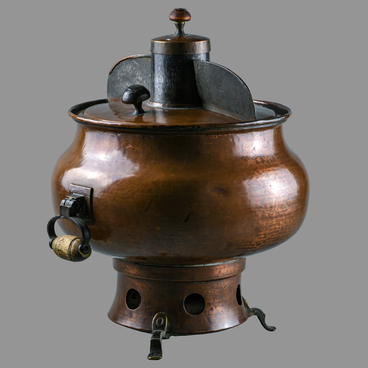When Orsk was officially recognized as a city, only 1823 residents lived there. However, according to statistics, by January 1870 the population already reached 5558 people.
On the territory of Orsk County there were water and windmills, tannery, tallow-melting and brick factories along the banks of Urals and Or, which belonged to ‘local merchants and burghers’. The population of the city was largely occupied with agriculture, trade and handicrafts. The number of craftsmen amounted to about 120 people. At the daily markets, which replaced fairs, they sold bread, leather, lard, stone products, timber and bricks ‘from the local factories’. Caravans passed through the city to all settlements in Orenburg province, Turkestan and Turgay region.
On the territory of Orsk County there were water and windmills, tannery, tallow-melting and brick factories along the banks of Urals and Or, which belonged to ‘local merchants and burghers’. The population of the city was largely occupied with agriculture, trade and handicrafts. The number of craftsmen amounted to about 120 people. At the daily markets, which replaced fairs, they sold bread, leather, lard, stone products, timber and bricks ‘from the local factories’. Caravans passed through the city to all settlements in Orenburg province, Turkestan and Turgay region.
In V.E. Artemenko’s mill yardThe development of Orsk was facilitated by the transfer of the customs exchange yard to the city ownership, the opening of a post office (in 1868), the creation of new tracts.
By the decision of Governor-General Nikolay Kryzhanovsky, fortress verges were buried, after which the land was allotted for constructions.
By the decision of Governor-General Nikolay Kryzhanovsky, fortress verges were buried, after which the land was allotted for constructions.
According to the factory inspection at the end of the 19th century in Orsk there were two gritting factories. Forges were built in two and even three rows along Urals and Or. The most prominent crafts were felling, transporting and rafting of wood in Urals and Sakmara, coal burning, resin extraction and beekeeping (among the Bashkirs).
At the end of the 19th century gold, iron and manganese ores were extracted in Orsk County. The Asylovsky, Faizullinsky and Koltybansky mines used explosives to extract minerals.
In 1913, merchant entrepreneurs Nydecker and Burnaev built a number of enterprises. Worth noting is the construction of the mechanized slaughterhouse, which contributed to the development of livestock trade in Orsk County. In the same year, the partnership “Brothers Onikenko and Skibin” was engaged in the construction of a steam mill and a creamery.
At the turn of the century a group of very energetic and talented entrepreneurs was formed in the city: merchants Nydecker, Litvak, Smirnovs, Matz, Dolokazins, Burnayevs and many others. Many trading houses were opened.
From 1894 to 1908 the construction of the merchant Nazarov’s distillery was underway.
In 1908-1913 a number of foreign companies were founded in Orsk: Swedish ‘Kulberg & K’, representative office of the American company ‘Massey-Harris’, German ‘Evert’. The buildings of these companies were mostly located on the territory of the present-day Dekabristov and Petrashchevtsev streets.
In the years of World War I, which led to an inevitable rise in prices, the city still continued to develop. By 1916, its population had already reached 22000 people.
At the end of the 19th century gold, iron and manganese ores were extracted in Orsk County. The Asylovsky, Faizullinsky and Koltybansky mines used explosives to extract minerals.
In 1913, merchant entrepreneurs Nydecker and Burnaev built a number of enterprises. Worth noting is the construction of the mechanized slaughterhouse, which contributed to the development of livestock trade in Orsk County. In the same year, the partnership “Brothers Onikenko and Skibin” was engaged in the construction of a steam mill and a creamery.
At the turn of the century a group of very energetic and talented entrepreneurs was formed in the city: merchants Nydecker, Litvak, Smirnovs, Matz, Dolokazins, Burnayevs and many others. Many trading houses were opened.
From 1894 to 1908 the construction of the merchant Nazarov’s distillery was underway.
In 1908-1913 a number of foreign companies were founded in Orsk: Swedish ‘Kulberg & K’, representative office of the American company ‘Massey-Harris’, German ‘Evert’. The buildings of these companies were mostly located on the territory of the present-day Dekabristov and Petrashchevtsev streets.
In the years of World War I, which led to an inevitable rise in prices, the city still continued to develop. By 1916, its population had already reached 22000 people.



